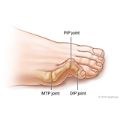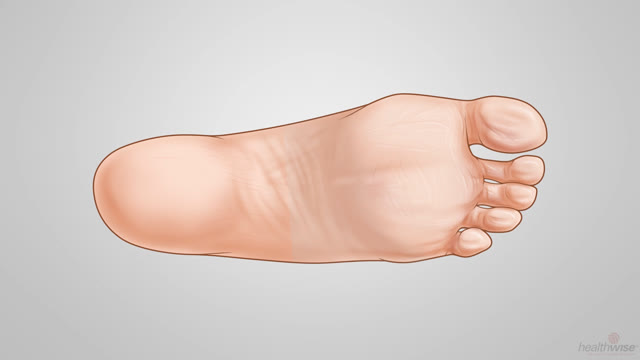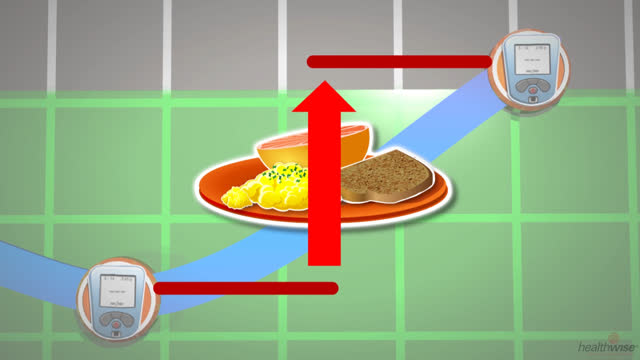How Diabetes Causes Foot Problems
Topic Overview
Many things work together to cause foot problems in people who have diabetes, especially poor circulation and nerve disease (neuropathy). Neuropathy significantly dulls awareness of your feet, making you more susceptible to extensive injury-related damage. Also, diabetes can impair your ability to heal by both damaging your immune system and decreasing the blood flow in your legs.
If your vision has been affected by diabetic retinopathy or other eye problems, you may not see an injury or infection in your feet early. If you get a foot infection or injury, you may not notice it until your condition is so serious that you require surgery, possibly amputation.
Who’s at risk?
Things that increase your risk for diabetic foot problems include:
- Poor blood glucose control. If your blood sugar levels are persistently above the target range, you are more likely to have foot problems.
- Age. The risk increases with age.
- Gender. Males are at higher risk.
- Race. African Americans, Hispanics, and Native Americans are at higher risk.
- Duration of diabetes. The longer you have the disease, the greater your risk.
- Other complications due to diabetes (small blood vessel disease, atherosclerosis of large vessels). If you already have other diabetic complications, you are more likely to have foot problems.
- Smoking. Smoking contributes to circulatory problems in your extremities, increasing your likelihood of developing foot problems.
- Peripheral neuropathy (damage to the nerves that control sensation and touch). Peripheral neuropathy results in poor sensation in your extremities, increasing your likelihood of having foot problems.
- Alcohol use disorder. Long-term heavy drinking can cause numbness and tingling in your hands and feet.
How do problems start?
Because foot disease in diabetes usually begins with neuropathy, your first step in preventing foot problems should be addressing problems with your nerves. Neuropathy causes problems in your feet by disrupting your nerves, both reducing your sensation of pain and causing problems with the way you walk. Such problems can damage your feet in the following ways:
- Reduced sensation prevents you from sensing pain and realizing that your foot has been injured. Poor eyesight can also reduce your ability to detect foot injuries and infections. For example, you may have a blister and not realize it because you don’t feel any pain from it or see the blister. Without treatment, this injury may progress to infection.
- Your feet are at risk for problems that arise from poor muscular control. If your nerves are no longer able to carry signals that mean the appropriate motion of your feet and lower legs while you walk, your body may compensate by forcing your feet to adopt unnatural positions while you move. Changing the way you walk increases your risk of getting foot ulcers and deformities. Your feet may become deformed and misshapen if you walk abnormally for an extended period of time. In fact, about half of all people with diabetes have a hammer toe or claw toe deformity or a Charcot foot deformity, caused by an abnormal walk. See a picture of Charcot foot.
What you can do
Here are a few things you can do to make foot problems less likely:
- Have your feet examined regularly by your doctor. The doctor will be able to detect any changes in your feet that mean a change in the way you walk. If you have an abnormal walk, your doctor may be able to equip you with appropriate shoes or inserts that will compensate for the changes in your muscle movement. By taking the pressure off parts of your foot that weren’t designed to bear such weight, your doctor will be able to minimize your risk of both deformity and injury.
- Keep your blood sugar in yourtarget range. Keeping your blood sugar levels within the target range recommended by your doctor can lower your chances of getting neuropathy. This will lower your risk of having foot problems.
- Check your feet for changes in skin color, cuts, blisters, and other problems.A foot exam should be part of your daily routine. Look at all areas of your feet, including your toes. Use a handheld mirror or a magnifying mirror attached to the bathroom wall near the baseboard to inspect your feet. If you can’t see well, have someone else examine your feet for you.
Current as of: April 16, 2019
Author: Healthwise Staff
Medical Review:E. Gregory Thompson MD – Internal Medicine & Adam Husney MD – Family Medicine & Kathleen Romito MD – Family Medicine & Karin M. Lindholm DO – Neurology
This information does not replace the advice of a doctor. Healthwise, Incorporated, disclaims any warranty or liability for your use of this information. Your use of this information means that you agree to the Terms of Use. Learn how we develop our content.








